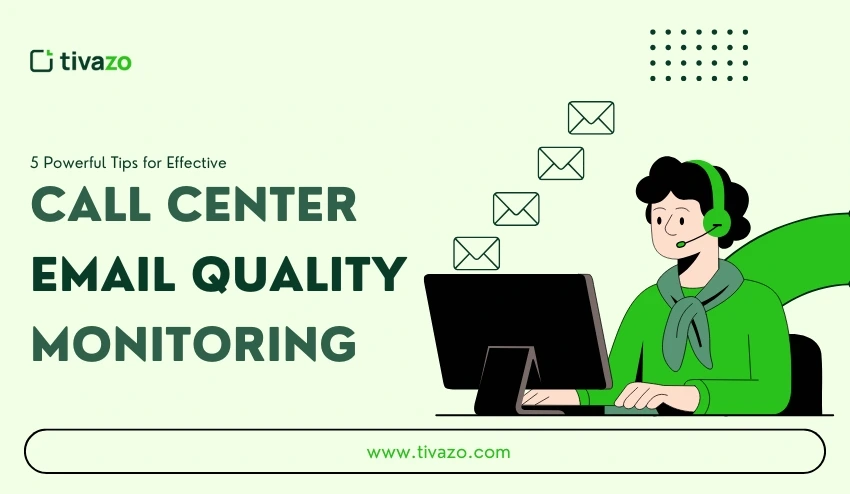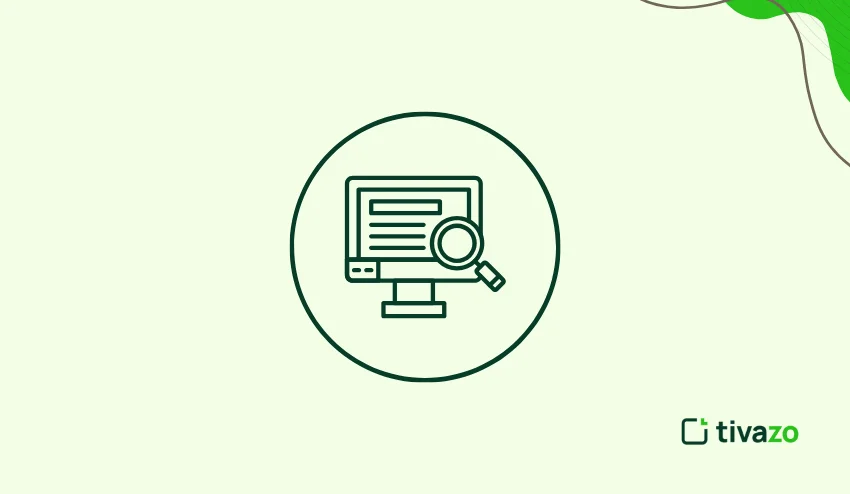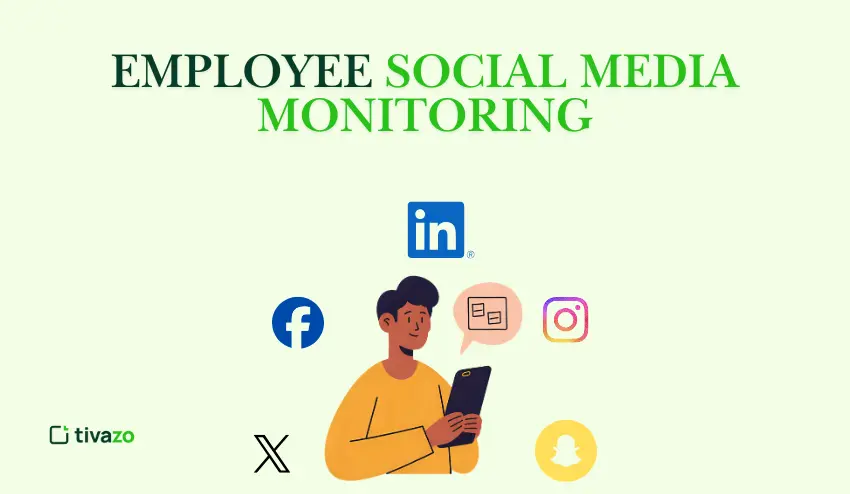Today’s business world is fast-paced, and call center email quality monitoring has become part of the customer service operations order of business. Email is one of the most used forms of communication today (used by 87% of the U.S. population), so monitoring and improving email quality measures can help improve customer satisfaction, agent performance, and call center quality overall. whether via email or WhatsApp Automation helps improve customer satisfaction, agent performance, and overall service quality
In this article, we will explore the practices of email quality monitoring, how to implement the right software to conduct it, and the ways to measure quality measures for email performance through tools available in the call center industry.
Key Highlights:
- Understanding Call Center Email Quality Monitoring
- Importance of Email Quality Monitoring in Call Centers
- Best Practices for Email Quality Monitoring in Call Centers
- Measuring Email Quality Performance in Call Centers
- Impact of Email Quality Monitoring on Customer Satisfaction
- Implement Call Center Email Quality Monitoring Software
Understanding Call Center Email Quality Monitoring
The primary intent of call center email quality monitoring is to make sure customer service representatives send messages of accurate, timely, and professional email replies. By monitoring customer service representatives’ email messages, call centers can track agent performance, identify training opportunities, and measure the effect of email communication related to customer satisfaction.
The Importance of Email Quality Monitoring in Call Centers
High-quality email monitoring is essential to help call centers deliver the highest customer service possible. As you continue to monitor email quality and evaluate email content, your business will acquire the confidence that you are meeting customer expectations and business standards. Below are some ways that email quality monitoring provides value in attaining overall objectives:
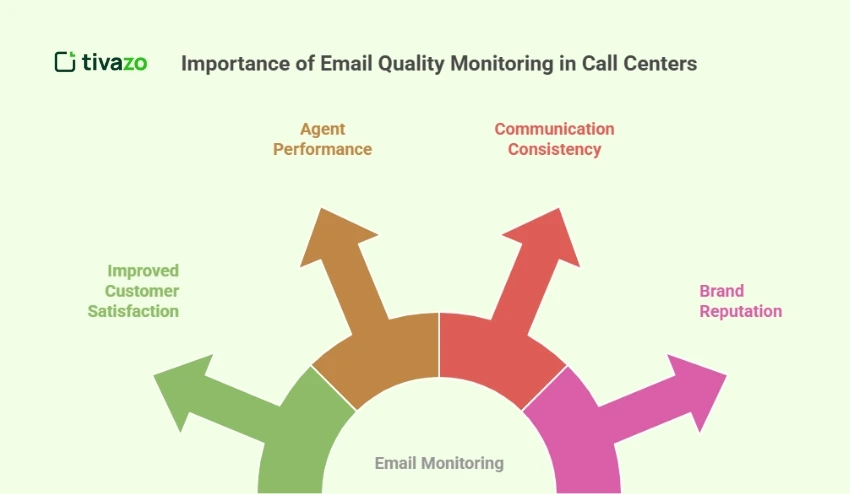
1. Improved Customer Satisfaction
Timely and effective emails create a good customer experience that contributes to the resolution of issues with more empathy and clarity. The better and quicker the email is for the customer, the better the overall customer satisfaction and loyalty will be.
2. Better Agent Performance
Ongoing monitoring of email content and communications provides continual feedback that will allow agents to refine their expertise in email communications faster. For example, their email response times may improve, as well as their tone, or even simply improving the accuracy of their emails.
3. Consistency in Communication
Monitoring email correspondence assures that all agents are using the call center email standards and deliver consistency of experience to customers regardless of agent or customer interaction. To enhance deliverability, apply SPF flattening for simpler and more reliable email authentication.
Additionally, implement DMARC monitoring to track unauthorized use of your domain and ensure that every outgoing email aligns with your organization’s authentication policies, safeguarding your brand reputation and improving overall email trustworthiness
4. Enhanced Brand Reputation
Professional and empathetic emails demonstrate that the company cares about customers and business. The more professional and empathetic the email communication, the greater the brand equity can grow.
Best Practices for Email Quality Monitoring in Call Centers
To maximize results, it is vital to take a structured approach to email quality monitoring. It’s not just about tracking emails; it is more about setting standards and expectations and providing proper feedback to agents. Having standard email monitoring processes allows you to maximize every email and ensure it contributes to a great experience for the customer and within the expectations the company’s has.
The following are the primary things you should put in place to ensure high-quality email communication in your contact center:

1. Set Clear Email Communication Standards
Setting clear call center email communication standards should be a priority because the standard process will achieve consistency and professionalism in every customer interaction. Identify standards for the most common email templates. Standard areas of focus for your call center email standards are:
- Tone: Use a friendly yet professional tone.
- Response Time: On target response time to prevent engaging the customer too often.
- Content Accuracy: The information in the email is accurate.
Establishing your call center email quality framework that agents can follow will ensure that any email you send to a customer will meet the same common high standards, making customer communications more productive and effective.
2. Implement Real-Time Email Monitoring
Using call center quality monitoring software allows you to capture emails in real-time. The benefit of this is that supervisors can give agents real-time feedback, allowing for performance improvement as well as establishing email compliance with your brand’s standard eventually.
Real-time monitoring software like Teramind or Sprinklr allows managers to see email interactions in addition to assessing response time, tone, and professionalism in interactions. You can use these tools to integrate with mass mail services, making it easier to track bulk communications while ensuring compliance and consistent messaging across your organization.
To make this process easier, you can use a free email API service like Maileroo to send, track, and verify outbound customer emails automatically. It guarantees reliable delivery, makes integration with call center software simple, and helps keep communication performance steady without extra costs.
- Track response time and ensure agents aren’t taking too long to reply.
- Analyze email tone to make sure it is within your brand’s voice
- Monitor accuracy and grammar to ensure professionalism.
3. Use AI-Powered Email Monitoring Software
AI-based email monitoring software since the technology assesses emails based on a number of prevalent concerns, such as grammar, tone, sentiment, and accuracy. Solutions like Dialpad and Qualtrics provide AI-powered insights that assess the quality of each email interaction at scale.
By leveraging email quality monitoring software, you can:
- Automatically flag emails that contain spelling or grammar issues through advanced email verification.
- Assess sentiment, and AI will verify agents are using the right tone, especially in customer service.
- Measure effectiveness by reviewing the helpfulness of their responses.
4. Continuous Training and Feedback
Depending solely on monitoring email quality is not adequate for guaranteeing long-term improvements. Ongoing training is important in order for agents to develop their communication skills and stay current with changing company standards and expectations. Measuring employee performance through employee performance evaluation tools will analyze individual performance as well as what aspects of email communication agents are doing well and where they are struggling.
Through providing individualized coaching with agents, you can target specific areas of weakness, develop some skill-building, and ensure that agents are continually improving their email responses, leading towards improving quality of service provided.
5. Track Email Performance Metrics
Monitoring email metrics related to call center email performance, including response times, accuracy, and resolution times, will ensure that managers understand where their team is succeeding and where they need improvement. Email metrics that should be tracked include:
- Email response time tracking: Ensure that agents are replying on time.
- Customer satisfaction (CSAT): Measure how happy customers are with the quality of email responses.
Establishing these performance email metrics will help ensure a continuous improvement in the performance of your team.
How to Implement Call Center Email Quality Monitoring Software
It is important to select the proper email monitoring software to effectively monitor and improve email communications with customers. The right software will optimize performance monitoring, will help automate feedback, will assist in maintaining service standards, and will provide supervisors the ability to recognize where agents may need to improve on time.
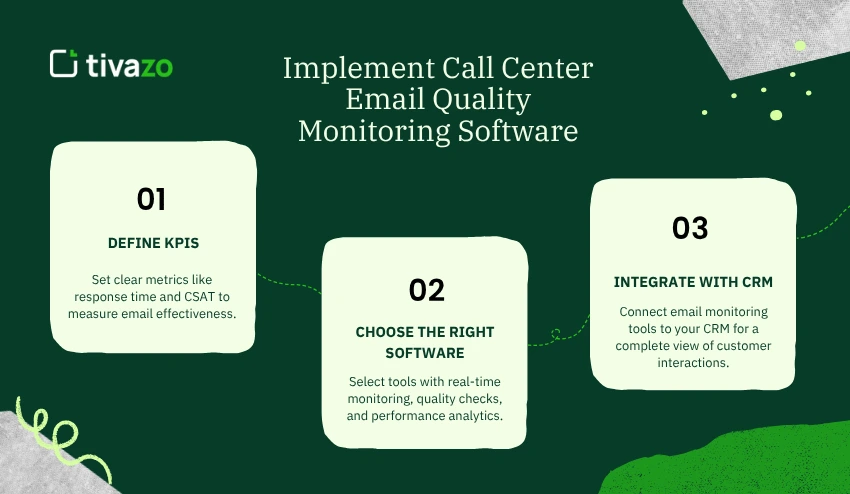
1. Define KPIs
Before any email monitoring software is implemented, there needs to be a clear definition of the performance indicators that will be measured to determine the effectiveness of email communication when relating to customer service.
Important metrics to be measured include email response time, which contributes to overall customer satisfaction, and customer satisfaction scores that help determine if an agent has dealt with the customer inquiry properly.
2. Choose the Right Software
Once you have defined what your performance indicators will be, select the right email monitoring software based on the needs of your call center. The right email monitoring software will have reporting that allows for real-time monitoring of emails, offers quality checks (with grammar, tone, etc), and allows for analytics to measure trends and performance.
Some of the better products available are Sprinklr, which manages omnichannel quality, Teramind for real-time reporting, and Dialpad, which reports AI-based sentiment.
3. Link Software with Your CRM
Linking your monitoring software with your CRM also ensures that you see a complete view of your customers’ interactions across platforms and channels. This allows you to save time, minimize discrepancies in data, and get a complete look at both customer interactions and agent performance for better feedback and support.
Measuring Email Quality Performance in Call Centers
Effective measuring of email quality performance is crucial for understanding how well agents are performing and where improvements are necessary. Here’s how to assess email communication quality:
1. Track Response Times and Accuracy
Monitor how quickly agents respond to customer queries. Fast response times are crucial for maintaining customer engagement. Simultaneously, evaluate the accuracy of the response to ensure that customers are getting the right information.
2. Customer Feedback and Satisfaction
Always ask for customer feedback immediately after every email interaction. This feedback will provide a direct, measurable indication of how well the agent handled a situation. Begin monitoring customer satisfaction metrics such as:
- CSAT (Customer Satisfaction Score)
- NPS (Net Promoter Score)
Customer satisfaction metrics are instrumental in determining the value of email quality monitoring with respect to customer satisfaction.
3. Analyze Agent Performance Using KPIs
Use the same call center KPI’s to measure email responses that you would for a phone call. Some examples include:
- Email resolution rate: What is the percentage of customers who have their issues resolved through the first email?
- Escalation rate: How often do emails need to be escalated to higher-tier agents?
- Customer retention: Measure the long-term loyalty of customers with respect to the quality of their email interaction.
Top Email Monitoring Software for Call Centers
There is a multitude of call center email monitoring applications currently available, each providing a variety of features for varied levels of needs. Which tool to choose depends upon your specific needs and whether you want real-time monitoring, AI-development insights, or a complete omnichannel solution. Here are some of the very best:
- Sprinklr:
- Sprinklr is a customer experience platform that provides omnichannel management. This means that it allows a call center to monitor and manage customer experience across numerous platforms such as email, chat, social media, etc. Sprinklr allows supervisors to evaluate agent performance across all channels and provide comprehensive feedback to agents.
- Teramind:
- Teramind is well known for its real-time monitoring capabilities and allows managers to track email interactions as they happen. This monitoring application allows supervisors the opportunity to assess emails immediately, even being able to dive deep into employee behaviors, performance, response time or overall effectiveness.
- Qualtrics:
- Qualtrics is an AI-enabled tool that assesses email sentiment, which is of interest when assessing customer satisfaction. By measuring how customers feel about the email responses they receive, it exposes some of the emotional tones in the customer-agent interaction. But, not only does Qualtrics use its analytic and reporting capability to help managers create reports that contain actionable insights,
- Qualtrics is an AI-enabled tool that assesses email sentiment, which is of interest when assessing customer satisfaction. By measuring how customers feel about the email responses they receive, it exposes some of the emotional tones in the customer-agent interaction. But, not only does Qualtrics use its analytic and reporting capability to help managers create reports that contain actionable insights,
Call Center Quality Monitoring Strategies for Email Responses
To make sure that agents are reliably performing to a high standard, it is critical to employ quality monitoring strategies that are effective. One strategy is to create an agent scoring system that clearly defines, for example, a 5-point scale that assesses important metrics such as tone, resolution, and timeliness. For instance, in regards to tone, check for friendliness and professionalism, in terms of resolution, check to see if the email resolved the customer’s issues, and finally, for timeliness, whether the email was sent quickly.
A second key strategy is the periodic assessment of email interactions. Periodic assessments are necessary to ensure an email is consistent with standards and to assess the frequency of certain problems, such as delays and poor tone.
Impact of Email Quality Monitoring on Customer Satisfaction
The consequences of email quality monitoring on customer satisfaction are considerable and far-reaching. When call centers have effective monitoring approaches in place, they enhance the likelihood that every email interaction meets a high standard and ultimately, create a better customer experience.
Here are the primary benefits of email quality monitoring from the point of view relating to customer satisfaction:
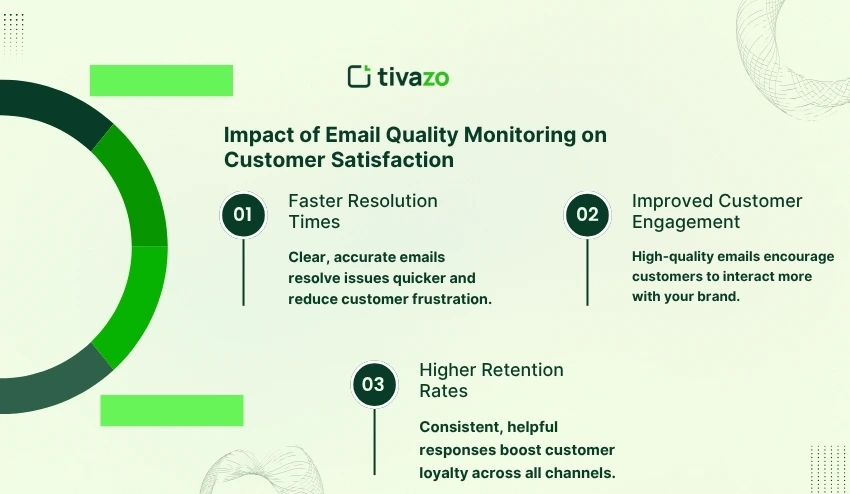
- Faster Resolution Times: Well-thought-out email responses ensured a greater likelihood that customers’ concerns would be resolved in the current email, and therefore, quicker to wait and less frustrating.
- Improved Customer Engagement: The overall quality of emails created a more positive interaction, with email monitoring encouraging customers to engage more with the brand and reach out for help when needed.
- Higher Retention Rates: Consistent email service assured a higher rate of customer retention, regardless of the channel, where the customer’s experience met their expectations and kept them loyal over the long haul.
How to Implement Call Center Email Quality Monitoring Software
When you decide on an email quality monitoring software, it is important to choose the right one to take full advantage of how efficiently it can track and improve email communications. A good email monitoring software will make performance measures easier to analyze, automate feedback to agents, and keep your service standards consistent.
Continuous Improvement and Adaptation
After deciding on the monitoring software, you will need to keep re-evaluating and modifying how you implement your email quality monitoring processes. Updated processes, improvements, or adjustments will be based on agents’ performance data and customer feedback; therefore, maintaining your quality of service is an ongoing process, as is keeping email interactions relevant to a customer’s ongoing expectations of your business and proper professional conduct.
Conclusion
Implementing a quality monitoring system in the call center as it pertains to emails, is essential to maximize and optimize customer service teams. By following proper practices for email quality monitoring, utilizing the right software, and ongoing evaluations of performance, call centers can improve the performance of agents, help improve customer satisfaction, and continue to uphold a strong reputation for direct business communications.
